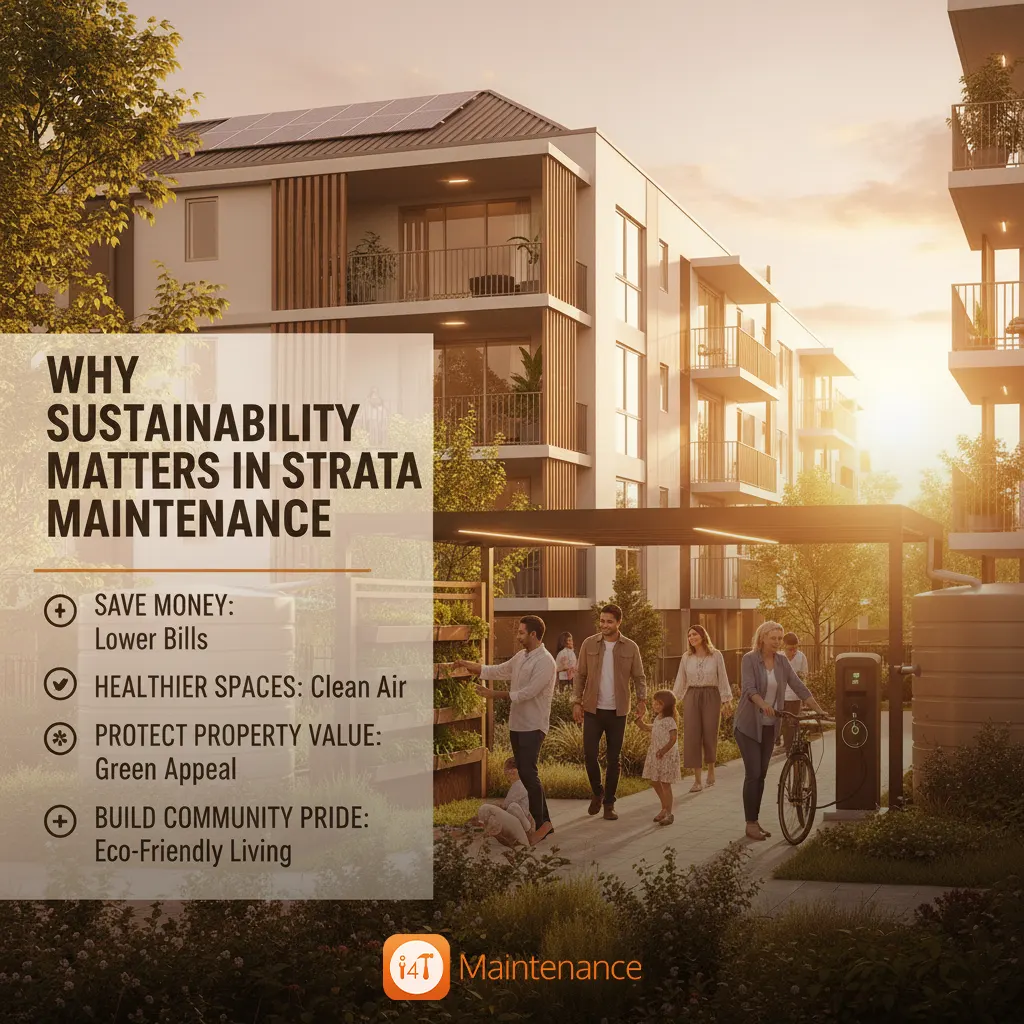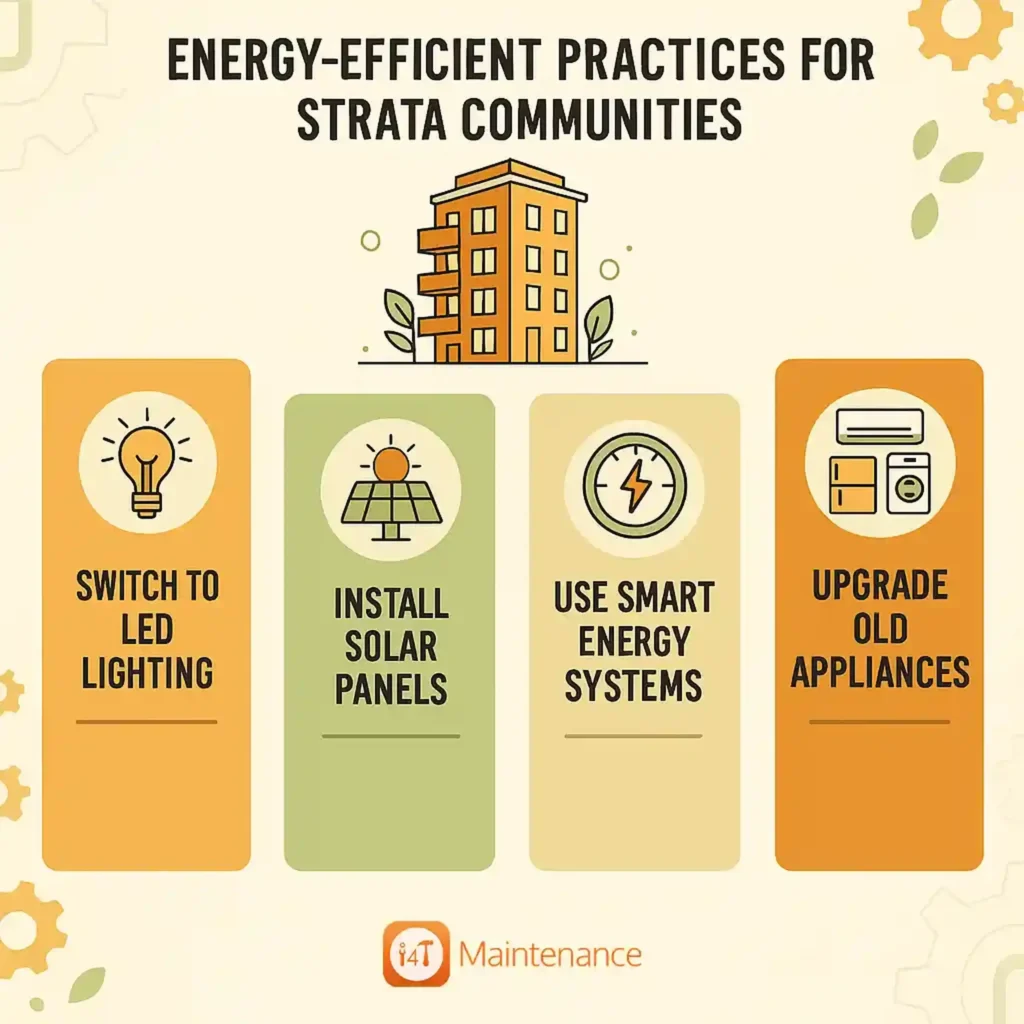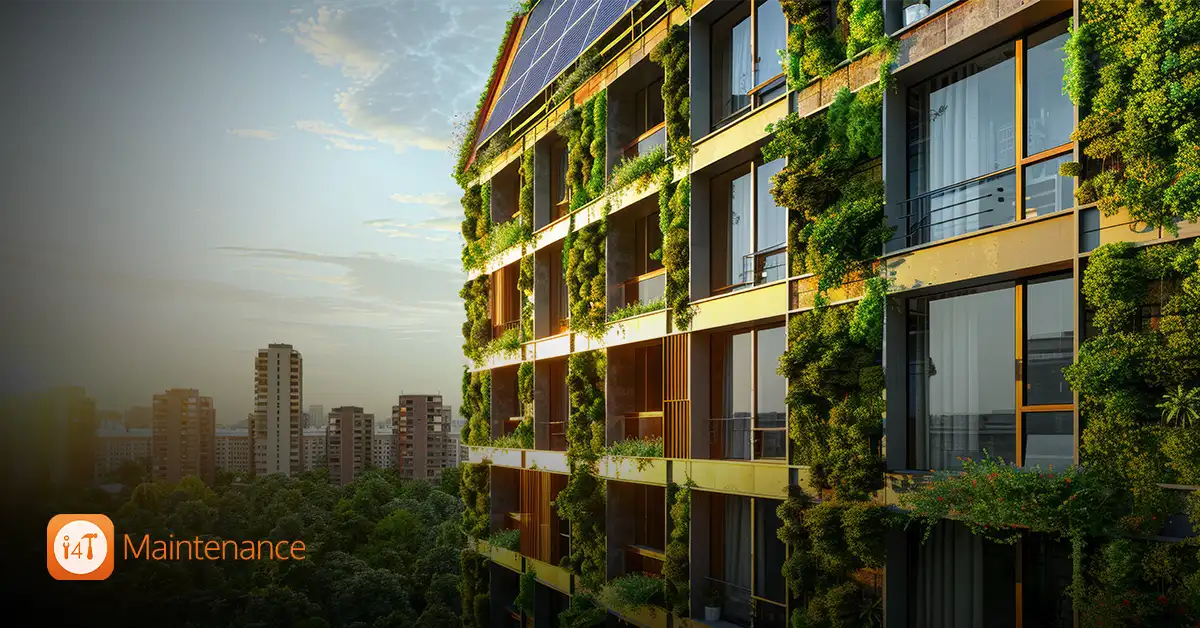Sustainability is quickly becoming the way forward for every community, especially strata living. With more Australians choosing apartment and strata lifestyles, the way we maintain these shared spaces has a huge impact on both our environment and our wallets.
As we move into 2026, there’s growing pressure from residents, regulators, and even future buyers to adopt eco-friendly practices that make buildings healthier, more efficient, and kinder to the planet. The good news? Sustainable strata maintenance doesn’t just tick the “green” box; it also saves money, improves property value, and creates a better place to live for everyone.
In this article, we’ll explore practical, eco-friendly maintenance strategies that strata managers and committees can start using right now. From energy-saving upgrades and water-wise solutions to waste reduction programs and smart technology, you’ll discover how small changes can deliver big results.
Best of all, we’ll show you how to future-proof your property while keeping residents engaged and happy.
Why Sustainability Matters in Strata Maintenance

If you live in or manage a strata property, you already know how much day-to-day maintenance goes into keeping things running smoothly. From fixing leaks and looking after gardens to keeping the lights on in common areas, it all adds up. Now imagine if all those little tasks could be done in a way that not only saves money but also protects the planet. That’s where sustainable maintenance comes in.
More and more Australians are looking for homes that reflect their values, and sustainability is right at the top of the list. Residents want greener, healthier, and more energy-efficient places to live. On top of that, the government is tightening rules around energy use, water conservation, and waste reduction. Strata managers who act now will find themselves ahead of the curve.
The benefits aren’t just about doing the right thing for the environment. Sustainable practices help:
- Save money: Lower power, water, and repair bills.
- Create healthier spaces: Less pollution and better air quality for residents.
- Protect property value: Green buildings are more attractive to buyers and renters.
- Build community pride: People feel good about living in a building that’s eco-friendly.
Sustainability in strata maintenance is about making smarter choices that everyone in the community can benefit from, both now and in the future.

Energy-Efficient Practices for Strata Communities
Energy is often one of the biggest running costs in a strata property. From lighting up hallways and car parks to powering lifts and heating swimming pools, the bills can be pretty high. The good news? With the right energy-saving upgrades, strata communities can cut costs and reduce their environmental footprint at the same time.
Here are a few smart ways to make it happen:
- Switch to LED lighting
Replacing old bulbs with LEDs is one of the quickest and cheapest ways to save money. They last longer, use less power, and can be paired with motion sensors so lights only turn on when needed. - Install solar panels
Many strata buildings are now installing rooftop solar systems. These can power common areas or even feed back into the grid, lowering electricity bills for everyone. Adding battery storage means the building can store excess power for later use. - Use smart energy systems
Smart meters and energy management systems track where power is being used most. This helps strata managers spot waste and make better decisions, like adjusting heating, cooling, or lighting schedules. - Upgrade old appliances and equipment
Things like pool pumps, air conditioners, and lifts can be big energy guzzlers. Switching to energy-efficient models may cost more upfront but will save money in the long run.
Water Conservation Strategies
Water is one of our most precious resources, and in Australia, we know how important it is to use it wisely. Strata properties, with dozens (or even hundreds) of residents, can use a massive amount of water every single day. But with a few smart changes, it’s possible to cut down on waste and keep bills under control.
Here are some practical ways strata communities can save water:
- Install water-saving fixtures
Simple upgrades like low-flow taps, showerheads, and dual-flush toilets can reduce water use without affecting comfort. - Rainwater harvesting
Collecting rainwater from the roof and using it for gardens or cleaning common areas is a clever way to reduce reliance on mains water. - Greywater recycling
Systems that reuse water from showers, sinks, or washing machines can provide a safe and sustainable supply for landscaping. - Smart irrigation and native plants
Automated watering systems that adjust to weather conditions prevent overwatering. Choosing native, drought-tolerant plants also means gardens need less water and less maintenance.
These changes not only save water but also lower utility bills for the whole building.
By making water conservation part of everyday maintenance, strata managers can future-proof their properties against rising water prices and potential restrictions.
Waste Reduction and Recycling Programs
Waste is a big challenge in strata living. With so many people under one roof, rubbish can pile up quickly, and if it’s not managed well, it costs more money and creates an eyesore. The good news is, with the right systems in place, strata communities can reduce waste, recycle more, and even turn it into something useful.
Here are some effective ideas:
- Clear recycling stations
Make recycling simple by setting up well-labelled bins for paper, glass, plastics, and metals. When residents know exactly where things go, contamination drops and recycling rates improve. - Composting organic waste
Food scraps and garden clippings don’t need to end up in landfill. Compost bins or worm farms can turn waste into nutrient-rich soil for common gardens. - Repair and reuse programs
Instead of throwing bulky items like furniture or appliances away, organise donation drives or “swap days” where residents can give unwanted items a second life. - Reduce packaging waste
Encourage residents to avoid single-use plastics and choose products with minimal packaging. Notices in common areas or community newsletters can be a gentle reminder.
By making waste reduction a shared responsibility, strata managers can save money on rubbish collection, cut down on landfill, and keep common areas cleaner and more welcoming.
Sustainable Materials and Eco-Friendly Repairs
Every building needs repairs and upgrades from time to time. The materials chosen during these jobs can make a big difference to both the environment and the long-term costs for owners. By picking sustainable options, strata communities can reduce harmful impacts while creating healthier spaces for residents.
Here are some smart choices:
- Low-tox paints and finishes
Traditional paints and sealants often release harmful chemicals (VOCs) into the air. Low-VOC or non-toxic alternatives keep the air cleaner and safer for residents, especially kids and older people. - Recycled and responsibly sourced materials
Whether it’s recycled timber, steel, or eco-certified flooring, choosing sustainable materials helps cut down on waste and protects natural resources. - Long-lasting solutions
It’s tempting to go for cheaper, short-term fixes, but they usually cost more in the long run. Investing in durable, high-quality materials means fewer repairs, less waste, and better value for owners. - Green construction practices
When carrying out bigger renovations, consider contractors who follow eco-friendly practices, such as recycling old building waste or sourcing local products to reduce transport emissions.
By thinking about the materials and methods used in repairs, strata managers can play a big role in building greener, safer, and longer-lasting communities.
Smart Technology for Eco-Friendly Maintenance
Technology is changing the way we live, and strata maintenance is no exception. In 2026, smart tools and digital systems will make it easier than ever to keep buildings eco-friendly while saving time and money.
Here are some clever ways technology helps:
- Sensors that spot problems early
Smart sensors can detect water leaks, unusual energy use, or poor air quality before they turn into bigger (and more expensive) problems. This prevents waste and avoids unnecessary repairs. - Energy and water tracking
Digital dashboards let strata managers see how much power or water the building is using in real time. With this information, it’s easy to find areas where savings can be made. - Smart lighting and climate control
Automated systems adjust lighting, heating, and cooling based on occupancy and weather. That means no wasted power from lights left on or air-conditioning blasting when it’s not needed. - Predictive maintenance
Using data, smart software can predict when equipment (like lifts or pumps) will need servicing. This reduces breakdowns and keeps things running smoothly without wasting money on unnecessary work.
Smart technology makes sustainable maintenance simple. It gives managers better control, helps residents live more comfortably, and ensures the building is always running as efficiently as possible.
Engaging Residents in Sustainable Living
Even the best eco-friendly upgrades won’t make much difference if residents aren’t on board. Strata communities work best when everyone plays a part, and creating a culture of sustainability is key.
Here are some ways to get residents involved:
- Share knowledge
Regular newsletters, noticeboards, or community meetings are a great way to remind residents about recycling rules, water-saving tips, or energy-efficient habits. - Green committees
Setting up a volunteer group gives residents the chance to take ownership of sustainability projects. It might be as simple as organising a recycling drive or helping choose eco-friendly suppliers. - Incentives and rewards
Small rewards, like recognising households that recycle the most or save the most energy, can encourage friendly competition and positive habits. - Celebrate successes
When the community reaches a milestone, like cutting energy use by 20%, share the news! Celebrating achievements keeps people motivated and shows that their efforts matter.
When residents feel engaged and proud of their community’s eco-friendly efforts, sustainable living becomes a way of life rather than just a list of rules.
Regulatory Compliance and Future-Proofing
Sustainability isn’t just about being kind to the planet; it’s also about staying in line with the rules. Across Australia, governments are tightening regulations around energy efficiency, water use, and waste management. For strata managers, this means eco-friendly maintenance is not only a smart choice but also a necessary one.
Here’s what to keep in mind:
- Energy ratings
Buildings are being asked to meet higher energy performance standards. Upgrades like LED lighting, solar panels, and efficient appliances help meet these requirements. - Water use restrictions
Many councils already have water-saving rules in place, and these are likely to become stricter in the future. Installing smart irrigation and water-saving fixtures now means your property is ready. - Waste reduction policies
Expect stronger recycling and waste management regulations by 2026. Strata communities that already have systems in place will find it much easier to comply. - Long-term savings
Staying ahead of compliance not only avoids fines but also makes properties more attractive to buyers and renters who value green living.
By planning ahead and adopting eco-friendly practices early, strata managers can future-proof their buildings, avoid unexpected costs, and give their communities a real edge in the property market.
Long-Term Benefits of Sustainable Strata Maintenance
Going green in strata maintenance is as much about being an investment that pays off for years to come, as it is a practical step toward short-term savings.
The real value of eco-friendly practices becomes clearer the longer they’re in place.
Here are some of the big long-term benefits:
- Lower running costs
Energy-efficient systems, water-saving fixtures, and smart technology keep utility bills down year after year. - Healthier living spaces
Cleaner air, better lighting, and reduced waste create a more comfortable and enjoyable environment for residents. - Stronger property values
Buyers and renters are increasingly looking for sustainable buildings. A well-maintained, eco-friendly strata complex is more appealing and can attract higher prices. - Future-proofing against rising costs
Energy and water prices are likely to keep increasing. Sustainable practices act as a buffer, helping communities stay ahead. - Positive community reputation
A green building stands out in the market and builds pride among residents, who feel good about living in a property that cares for the planet.
Sustainable maintenance is about creating long-lasting value – for residents, owners, and the environment alike.
Conclusion
At the end of the day, sustainable strata maintenance is about making smart choices that work for everyone. It saves money, keeps buildings in great shape, and makes our communities healthier and happier places to live. Plus, it’s a great way to do our bit for the planet.
The good news is, you don’t have to do everything at once. Even small steps, like switching to LED lights or starting a recycling program, can add up to big results over time. What really matters is getting started and building momentum.
As we move into 2026, more residents, buyers, and regulators will be expecting eco-friendly practices. Strata managers who lead the way now will not only stay ahead of the rules but also build communities people are proud to call home.
If you’re ready to make your strata greener and easier to manage, the right tools can make all the difference.
Give i4T Maintenance – Maintenance Management Software a go. It helps you plan, track, and manage all your maintenance tasks in one place, making sustainable living simple for you and your community.
FAQs
The top practices include switching to LED lighting, installing solar panels, harvesting rainwater, recycling waste, and using sustainable materials for repairs.
By upgrading to energy-efficient appliances, using smart meters, and installing renewable energy systems like solar with battery storage.
Yes. Solar panels reduce power bills, increase property value, and help meet stricter energy regulations. Adding batteries makes the savings even bigger.
Residents help by recycling correctly, saving water and energy, joining green committees, and supporting eco-friendly community initiatives.
Smart sensors, digital dashboards, and predictive maintenance tools help track energy and water use, spot problems early, and reduce waste.

